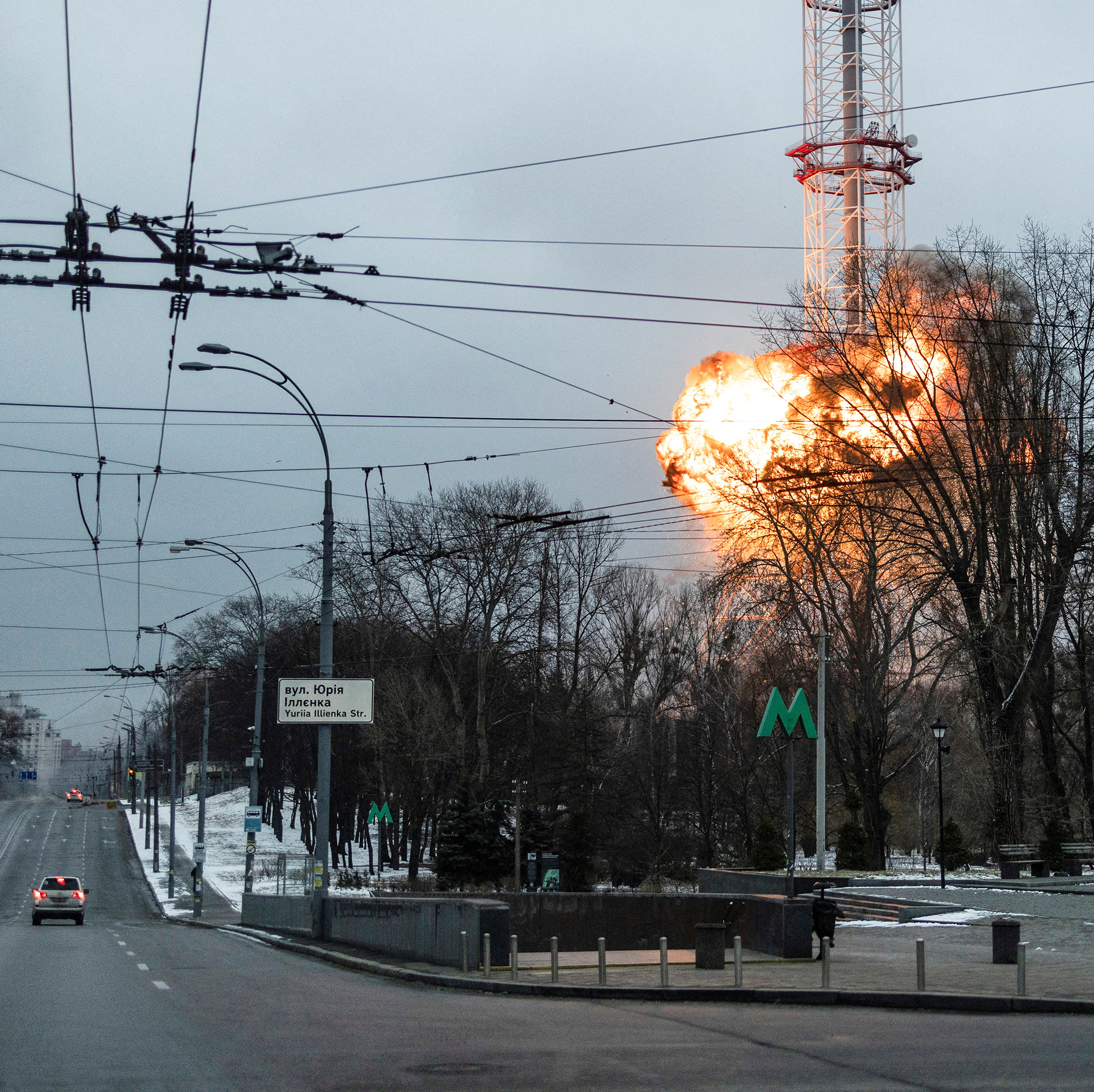The roots of Russia's invasion of Ukraine go back decades and run deep. The current conflict is more than one country fighting to take over another; it is - in the words of one U.S. official - a shift in "the world order."Here are some helpful stories to make sense of it all.

Displaced Ukrainians weave camouflage netting for the military in Zaporizhia Youth Center on March 19. Anton Shtuka for NPR hide caption

ZAPORIZHZHIA, Ukraine - On a recent Saturday morning, several dozen volunteers at a youth center are weaving strips of cloth to make camouflage netting for the Ukrainian army. They are in the capital of Ukraine's southeastern province of Zaporizhzhia, about two-thirds of which is controlled by Russian forces. The front line is 25 miles from here. But this city - the biggest in the province, and a major industrial hub - remains firmly in Ukrainian hands.

Many of those helping in the war effort here today fled homes that are now in Russian-occupied territory further south. That's the case for 36-year-old Kateryna Kyshkan, one of the volunteers, who lived for a year and a half under Russian occupation.

"It was terrible," she says. "It was very scary because there were a lot of tanks and bombs. And they would come into my house."

Kateryna Kyshkan, 36, a fitness trainer from Mykhailivka, volunteers for the war effort after being displaced. Her T shirt reads, "Our Russophobia is not enough." Anton Shtuka for NPR hide caption

Many people fled immediately. Kyshkan says she stayed so long because she believed the Ukrainian army would save them. By the summer of 2023, it was increasingly difficult and dangerous to get out.

Kyshkan shows the route she and her 14-year-old daughter took in July 2023 on a map.

To enter Ukraine from occupied territory, you have to pass through Russia or a third country, such as Belarus. It also means going through Russian checkpoints, where soldiers search your phone, your belongings and your person, in a process called "filtration" that Kyshkan describes as "frightening." All the more so because she has a patriotic Ukrainian tattoo showing the vyshyvanka, a traditional needlepoint that has become a symbol of Ukrainian resistance, on her forearm that she says she hid under long sleeves.

Kateryna Kyshkan weaves strips of cloth into camouflage netting. She worried that her patriotic Ukrainian tattoo would get her arrested at Russian checkpoints. Anton Shtuka for NPR hide caption

One of Moscow's demands for ending its war in Ukraine is the recognition of four Ukrainian provinces, including Zaporizhzhia, as belonging to the Russian Federation. The other three are Kherson, Donetsk and Luhansk.

While the Kremlin's forces do not entirely control these regions, Russian President Vladimir Putin claims their residents chose to join Russia in referendums. But those referendums, held in the fall of 2022 at gunpoint, were condemned as illegal by the U.N. General Assembly and had no validity under international law.

Kyshkan remembers Russian soldiers coming to her house with the ballots. She says she locked her door and hid upstairs. She says many people hid - or, if they were too afraid, they just went ahead and voted as the Kremlin wished.

People walk down the street past banners commemorating fallen soldiers in Zaporizhzhia. Anton Shtuka for NPR hide caption

Zaporizhzhia's streets are nearly empty. There are no Russian soldiers in the city, but there is always the threat of Russian drones and missiles, and sirens wail many times a day.

Twenty-three-year-old Alyona Serdyuk and Sergey Vasylko are waiting for us in the parking lot of a drab grouping of apartment blocks. They live on the 6th floor of one of the buildings, along with Serdyuk's parents. Alyona's mother Vita Serdyuk, 48, is at home.

The family, including Vasylko's parents, fled their hometown of Komysh Zoria, about 50 miles southeast of here, a couple months after the war started. Vasylko's parents now live elsewhere in the province.
